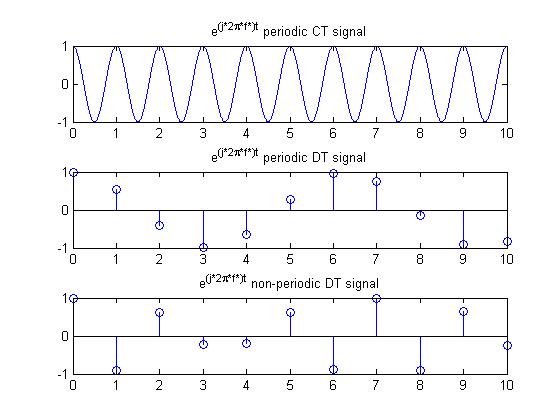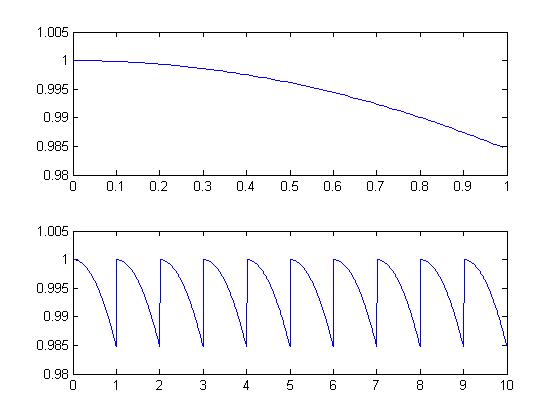PERIODIC AND NON-PERIODIC DT SIGNALS FROM A CT SIGNAL
%ECE 301
%Daniel Barjum
%HW 2A
clear
clc
%periodic CT signal
f = 1;
t = 0:0.001:10;
x = real(exp(j*2*pi*f*t));
subplot(3,1,1);
plot(t,x)
title('e^{(j*2\pi*f*)t} periodic CT signal');
%periodic DT signal
f = 1/(2*pi);
n = 0:1:10;
x = real(exp(j*2*pi*f*n));
subplot(3,1,2);
stem(n,x)
title('e^{(j*2\pi*f*)t} periodic DT signal');
%non - periodic DT signal
f = pi/2;
n = 0:1:10;
x = real(exp(j*2*pi*f*n));
subplot(3,1,3);
stem(n,x)
title('e^{(j*2\pi*f*)t} non-periodic DT signal');
PART 2
MAKING A NON PERIODIC SIGNAL PERIODIC
algorithm was borrowed from a friend.
clear
clc
t=0.0001:.01:1;
y=exp(3*t*j/17);
subplot(2,1,1);
plot(t,y)
x=[]
for lcv=1:10
x=[x,y];
end
t=[0.01:.01:10];
subplot(2,1,2);
plot(t,x)



